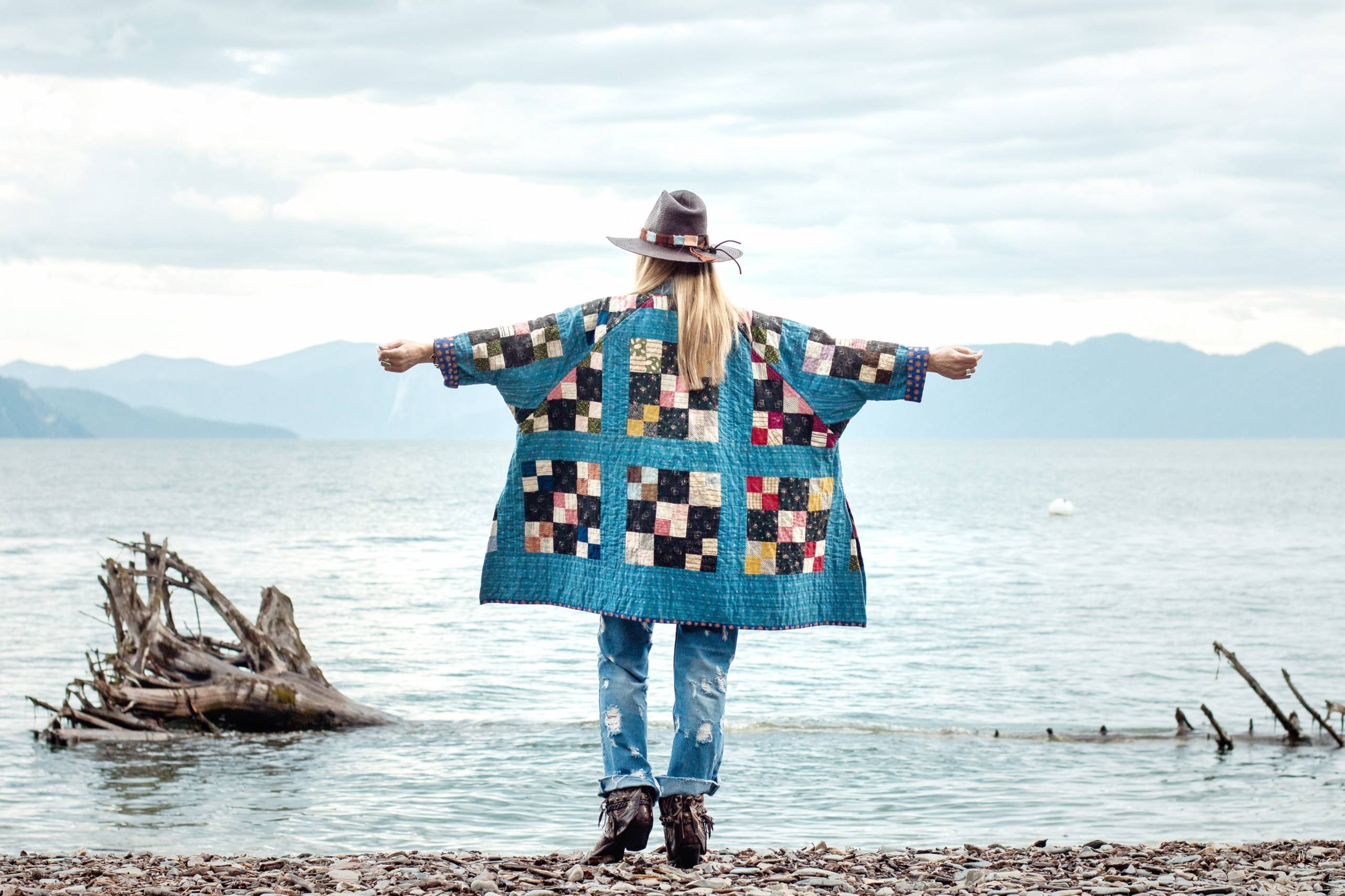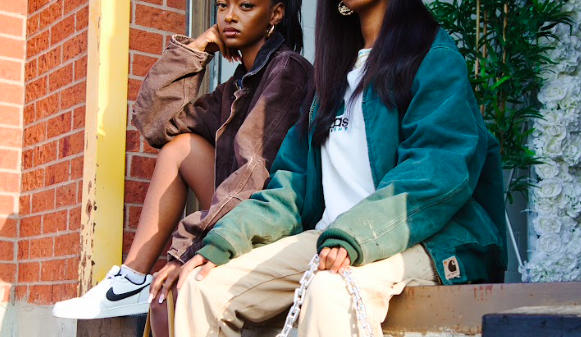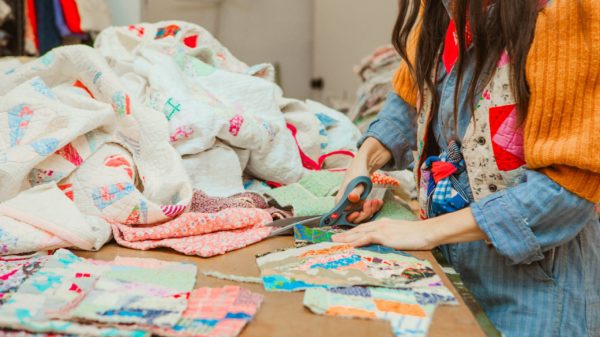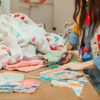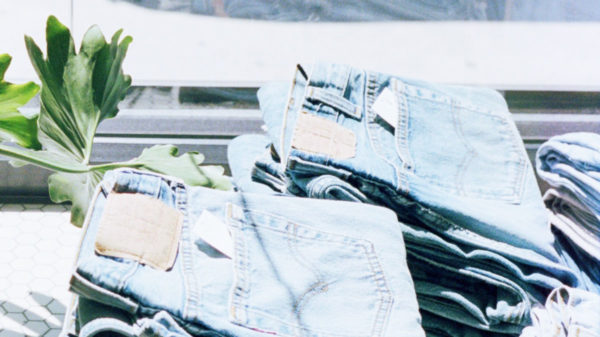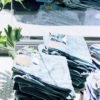Pinterest has spoken and people are trading in their bombers for upcycled quilted jackets. The platform’s annual Predicts report claims a four-time increase in searches year over year for quilted clothes in Canada, the U.S., and Australia.
It’s no surprise that people are searching for quilted clothing, as it’s been popular on runways for numerous seasons. In 2018, Calvin Klein, Christian Dior and Isabel Marant were just some of the designers that featured quilting in their collections. In 2019, quilted clothing made an appearance on the Spring/Summer runways at Loewe, Prabal Gurung and Coach.
2020 was no exception; quilting was spotted on the Fall/Winter runways once again at shows like Awake Mode, Burberry and Chloe. Many designers have used quilting as a way to explore the American identity, some taking inspiration from the American West and some from 70s folk style.
According to Who What Wear, a quilted pattern is produced when you sew two or more fabric pieces together to create a thicker padded material. An old sewing technique that dates back to ancient Egypt, quilting became popular in medieval Europe and later reemerged in the 18th century.
While America was being colonized, early settlers couldn’t afford to waste materials and made quilts out of whatever scraps they could find to keep warm. But once Amish and Dutch colonists arrived in Pennsylvania and the Midwest, living conditions started to improve and quilting became an art form.
Worn Then, Trending Now: Fabrics That Tell Stories
Over the years, quilting has become a creative way for women to express themselves. Quilts were once used exclusively for bed coverings. Today, they’re incorporated into so much more.
Founder of Lady Lancaster, Elizabeth Leaman, regards her Mennonite roots as part of the inspiration behind her clothing brand that boasts one-of-a-kind quilted jackets and collars.
“We have a strong Mennonite and Amish community and tradition where I live in eastern Pennsylvania. Although my family was not and is not Amish, we come from Mennonite roots. Quilts are not exclusive to Mennonites but it is a big part of our tradition and you can follow American history through different iterations and patterns of quilts,” Leaman said.

Founder of Lady Lancaster Elizabeth Leaman
While quilts are meant to keep you warm in cold temperatures, they’re also sentimental pieces that tell stories.
“I love being able to touch and feel and decode the history of the piece we’re working with as much as possible,” Leaman explained. “When we deconstruct them, we learn so much about the maker and so much about the textiles. We learn about what’s inside and the original intent.”
Leaman isn’t the only one who loves quilting and reworking vintage pieces. Founder of Honeybea Rebecca Caulford opened her business almost 20 years ago and designs quilted pieces with heirloom textiles.
Since the launch of Honeybea, Caulford has spent a great deal of her life scouring thrift and secondhand stores for fabrics and heirloom textiles. Her love of quilted clothing and reworking old pieces comes from the thrill of finding fabrics that have a story to tell. By salvaging them, their stories continue.
“My work has always been inspired by rescuing the most damaged heirloom textiles and preserving the love and wisdom that rests deep beneath the surface. When I see an old, raggedy quilt or afghan so deteriorated that it is about to be lost forever, I feel so emotionally compelled to keep it alive,” said Caulford.
“Each piece I make is like a painting, filled not just with the colours and textures that make my heart sing in the process, but with the union of the many hands and hearts that worked on each textile long ago,” Caulford continued. “It’s a very powerful process, and I really think others can feel it too.”
Based on her customer’s interests, Leaman believes that quilted clothing has become popular for two reasons: people want to keep up with what’s trending on the runway and people want to stay away from fast fashion.
“From what I can see directly with our customers, there are two different reasons and this is really generalizing, but I think I can put most of our customers in two different buckets. One bucket is the people who read Vogue, they read Marie-Claire… They follow the runway closely so they can see the trends and they want to be on-trend or ahead of the trend,” explained Leaman.
“So one of the motivating factors is just keeping up with what’s going on in fashion and right now quilting is having a boom. The second reason, in my opinion, is the democratization of fashion and that desire to get away from fast fashion.”

Rebecca Caulford of Honeybea
A More Sustainable Option With Sentimental Value
Pinterest’s Predicts report also states that there has been a six-time increase in searches year over year for reworked clothes. And according to ThredUP’s 2020 Resale Report, secondhand shopping is on the rise.
Apparently, the secondhand market is set to reach $64 billion over the next five years while retail is projected to shrink. The 2020 Resale Report also notes that Gen Z is powering the growth of secondhand shopping, followed by millennials.
Leaman believes the rise of secondhand shopping is due to awareness and “campaigns” for responsible fashion: “I think people are realizing that you can push your creative limits by using what might already be in your closet and what you find while thrifting. They are coming to realize they feel more ethical doing it that way. Even people who may not have the patience to go through racks while thrift shopping can shop secondhand online.”
With the rise of secondhand shopping, there’s no doubt people are becoming more eco-conscious. Caulford believes sustainability plays a big role in people’s interest in thrifting.
“More and more people are connecting to the fact that the climate crisis is real and that our actions are directly linked to the future of our planet,” said Caulford. “I’m so glad to see it. Fast fashion has to be done. We just can’t go on like that.”
In the end, quilts are all about telling one’s story. The obsession with quilting seems to come from people’s desire to wear something unique, like Leaman’s custom jackets, and to showcase their individuality.
One customer sent Leaman a “teeny-tiny” Levis denim jacket, and out of curiosity, Leaman messaged them over Instagram to ask why they wanted to include it in their custom design. She came to find out that the customer’s young son named Joshua had died of cancer and the jacket had been his.
“People want to wear meaningful pieces,” Leaman said. “They want to tell a story that nobody else on the street can. In our case, nobody else will have that exact jacket.”


